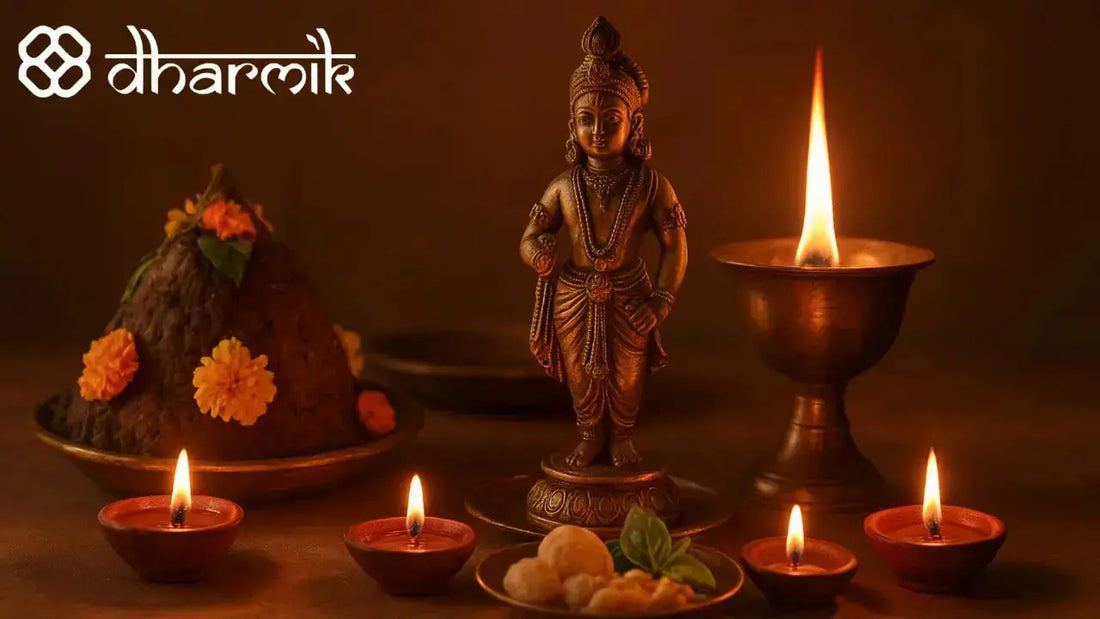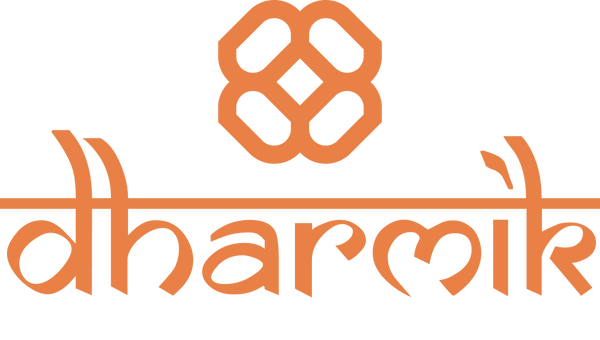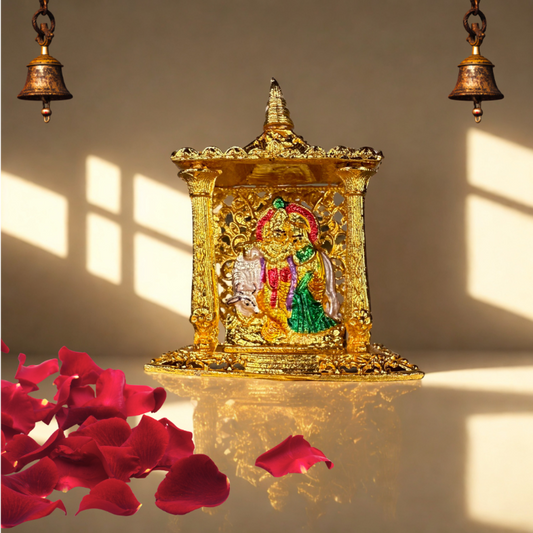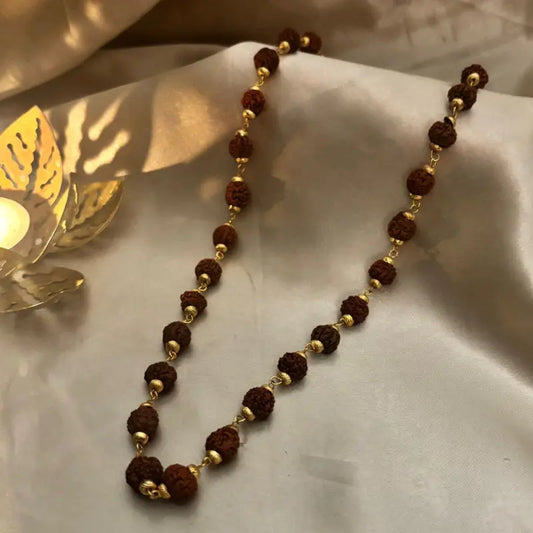
How to Perform Govardhan Puja at Home (Step-by-Step Rituals)
Share
Govardhan Puja, celebrated on the day following Diwali, holds immense importance in Hindu tradition. It commemorates the divine act of Lord Krishna lifting the Govardhan Hill on his little finger to protect the people of Vrindavan from torrential rains sent by Lord Indra. This act symbolises compassion, humility, and the victory of devotion over pride.
Performing Govardhan Puja at home is a deeply spiritual experience. It connects you to nature, to divinity, and to the eternal message of Krishna: that sincere faith can move mountains. With thoughtful preparation, devotion, and the right sacred items, you can recreate the essence of Vrindavan in your own home.

Step 1: Preparation for Govardhan Puja
Begin by purifying your home. Clean the area where you plan to perform the puja, ideally the puja room or a peaceful corner. Lay a clean cloth or asana, decorate it with flowers, and keep your puja essentials ready.
Traditionally, devotees create a small replica of Govardhan Hill from cow dung or clay to symbolise Mount Govardhan. You can shape it into a small mound and decorate it with flowers, leaves, and lamps (diyas). Around the hill, place mini idols or pictures of Krishna, Radha, and the gopis.
To create an authentic devotional ambience, light a Dharmik Hawan Cup. Made with 100% Shuddh Desi Gobar and enriched with aromatic ingredients like Loban, Hauberrai, Nagarmishta, Kaphoor, Kochari, Sugandh Kokila, Guggal, Hauberra, and Rose Fragrance. Ideal for pujas, meditation, or special ceremonies, these cups purify your surroundings and bring blessings into your home. It brings a serene fragrance reminiscent of temple rituals.
Step 2: Taking Sankalp and Invocation of the Deities
Once the setup is complete, sit facing east or north, and begin with a sankalp, a heartfelt vow to perform the puja with devotion and purity. Invoke Lord Ganesha for the removal of obstacles and then call upon Lord Krishna, Radha, and Govardhan Maharaj to bless the ritual.
You may hold a Tulsi Mala while chanting Krishna mantras or the Govardhan Ashtak. Chanting on a Tulsi mala is believed to enhance concentration and spiritual purity, as Tulsi is deeply sacred to Lord Krishna. This step helps centre your mind and invite divine energy into your home.
Step 3: Preparing and Offering Annakut
The Annakut (meaning “mountain of food”) is the heart of Govardhan Puja. It symbolises abundance, gratitude, and the act of offering everything back to the divine. Traditionally, devotees prepare a variety of vegetarian dishes, rice, lentils, curries, sweets, fruits, and snacks, and arrange them as a mountain in front of Krishna’s idol.
You can keep your Krishna Murti at the centre of the arrangement. Offer each dish with devotion, chanting “Govardhan Giridhari Ki Jai!” The Annakut represents the faith that Krishna provides for all and reminds us to live in harmony with nature.

Step 4: Performing the Govardhan Puja Rituals
After the offerings, light diyas and incense. Perform aarti of Lord Krishna and Govardhan Parvat by waving the lamp in circular motions while singing the Govardhan Aarti or Om Namo Bhagavate Vasudevaya.
Devotees then perform parikrama (circumambulation) around the small Govardhan Hill or altar seven times, symbolising devotion and surrender to divine will. This act is said to wash away ego and invoke divine blessings.
You can place Dharmik Krishnji Charan, a sacred representation of Krishna’s footprints, near your altar. It signifies that Krishna himself walks within your home, blessing your space with his divine presence.
Step 5: Meditation and Closing the Ritual
After completing the aarti and parikrama, sit quietly in meditation. Reflect on Krishna’s teaching from this festival that pride and material superiority have no value in front of true devotion and humility.
Offer Tulsi leaves, Makhan Mishri (butter and sugar), and sweets to the Lord. End with a silent prayer for peace, protection, and prosperity for your family. Once the puja is complete, distribute the prasad among your loved ones, symbolising shared joy and divine grace.
The gentle fragrance of the Dharmik Hawan Cup, the soothing chant of mantras, and the sight of your decorated altar together create a spiritual experience that stays with you long after the ritual ends.

The Significance of Govardhan Puja
Govardhan Puja isn’t just a ritual; it’s a reminder of how humanity should coexist with nature. When Lord Krishna lifted the Govardhan Hill, he taught the villagers that faith in the divine and gratitude towards nature are the true forms of worship.
The festival emphasises protection of the environment, humility, and collective welfare. It encourages us to be mindful of natural resources and treat them as divine manifestations rather than commodities.
Performing Govardhan Puja at home allows modern devotees to reconnect with these timeless values. It’s an opportunity to celebrate simplicity, surrender, and spiritual abundance values that bring balance in today’s fast-paced life.

FAQs About Govardhan Puja
- When is Govardhan Puja celebrated? Govardhan Puja is celebrated on the first lunar day (Pratipada Tithi) of Shukla Paksha in the month of Kartik, a day after Diwali. The exact date varies each year depending on the Hindu lunar calendar.
- When is Govardhan Puja celebrated in 2025? In 2025, Govardhan Puja will be celebrated on October 22, Wednesday, the day following Diwali. It is considered an auspicious time to perform puja, hawan, and offer Annakut to Lord Krishna.
- What is the significance of Govardhan Puja? The festival commemorates Lord Krishna lifting the Govardhan Hill to protect the people of Vrindavan from Indra’s wrath. It symbolises faith, humility, and harmony with nature. The ritual teaches that divine grace protects those who live with devotion and righteousness.
- How to perform Govardhan Puja at home simply? You can perform a simple version by making a small clay or cow dung hill, lighting a Govardhan hawan cup, placing your Krishna murti, offering homemade food, and performing aarti with devotion. What matters most is sincerity, not extravagance.
- What items are essential for the puja? You’ll need cow dung or clay (for the hill), flowers, tulsi leaves, sweets, diyas, incense, and sacred items such as Tulsi Mala, Krishna Murti, and Mandir essentials. Each item enhances the spiritual and cultural significance of the puja.
- What is the reason for using cow dung in constructing Govardhan Parvat? In Hinduism, cow dung is regarded as pure and auspicious. It symbolises fertility, protection, and connection to the Earth, making it ideal for representing Govardhan Hill, which stands as a protector of life and nature.
- What does the Annakut represent? Annakut represents gratitude for divine sustenance. It reminds us to thank the universe for abundance and to share food selflessly, an act considered one of the purest forms of devotion.
Performing Govardhan Puja at home is not just a ritual; it’s an experience of divine love and faith. Each step, from preparing the Annakut to lighting the Dharmik Hawan Cup, brings you closer to the spiritual essence of Krishna’s teachings.
When you chant with your Tulsi Mala, place your Krishna Murti, and adorn your altar with the Krishnji Charan, you’re not just decorating a space e you’re awakening devotion within your heart.
This year, may your Govardhan Puja be filled with devotion, purity, and the eternal blessings of Lord Krishna. Let the spirit of faith, humility, and gratitude illuminate your home just as brightly as the lamps of Diwali.





